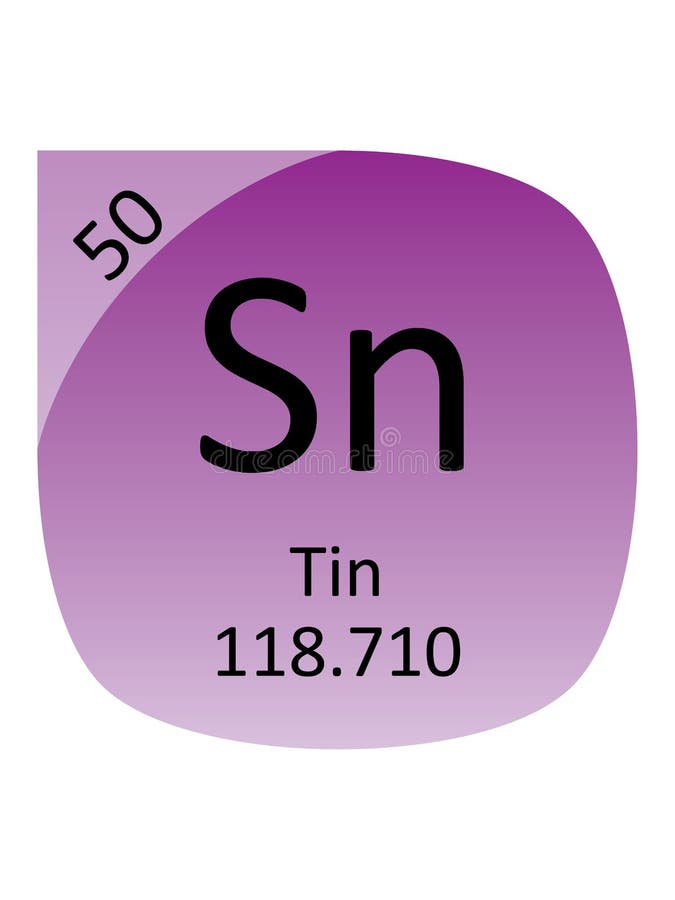

The third shell also has 8 electrons, but things get more complicated after than because the subshells spread out enough that there is overlap between them. In the periodic table, despite being non-metal, hydrogen is placed with metals. It is obtained chiefly from the mineral cassiterite, which contains tin dioxide. Interactive Periodic Table of Elements, periodic table, INL, chemistry, Idaho National Laboratory. Tin is a post-transition metal in group 14 of the periodic table. The second shell, associated with principal quantum number n=2, can have a maximum of 8 electrons and corresponds to the second period of the periodic table. Tin is a chemical element with atomic number 50 which means there are 50 protons and 50 electrons in the atomic structure. The number of electrons in a given shell can be predicted from the quantum numbers associated with that shell along with the Pauli exclusion principle. So hydrogen and helium complete the first period. In the periodic table, the elements are placed in "periods" and arranged left to right in the order of filling of electrons in the outer shell. iron (Fe), chemical element, metal of Group 8 (VIIIb) of the periodic table, the most-used and cheapest metal. Tin melts at low temperature about 231 0 C. Remember, periods are the horizontal rows on the periodic table and groups are the vertical columns. Tin has two allotropes forms: -tin is silvery white soft metal, and at low temperature it transforms into less dense - tin metal which is gray in color and has diamond cubic structure 2. Tin is found in Group 14 of the periodic table and Period 5. The first shell (n=1) can have only 2 electrons, so that shell is filled in helium, the first noble gas. Tin has atomic number 50 and its atomic weight is 118.69. Metals are elements on the periodic table that are malleable, lose electrons easily, good conductors of heat or electricity, and typically appear reflective. As electrons are added, they fill electron shells in an order determined by which configuration will give the lowest possible energy. You can effortlessly find every single detail about the elements from this single Interactive Periodic table.Lewis Dot Diagrams of the Elements Lewis Dot Diagrams of Selected Elements Lewis SymbolsĮlectron Distributions Into Shells for the First Three PeriodsĪ chemical element is identified by the number of protons in its nucleus, and it must collect an equal number of electrons if it is to be electrically neutral. Let me tell you how this Interactive Periodic Table will help you in your studies.ġ). Tin is widely used for plating steel cans used as food containers, in metals used for bearings, and in solder. It is a soft, silvery white metal with a bluish tinge, known to the ancients in bronze, an alloy with copper.
TIN PERIODIC TABLE FREE
Free Gift for you: Interactive Periodic Table tin (Sn), a chemical element belonging to the carbon family, Group 14 (IVa) of the periodic table. In this way, the elements of the same group show similar chemical properties and they also have the same number of valence electrons. They are soft and can be cut easily with a kitchen knife.Īlso all the elements of group 1 have one valence electron.Īll the elements of group 18 are chemically inert (that means they do not easily react with other elements).Īnd all the elements of group 18 have a complete octet (that means they have 8 electrons in their outer shell). Tin is used in for can coating: tin-plated steel containers are widely. Tin resists corrosion from distilled sea and soft tap water, and can be attacked by strong acids, alkalis and acid salts. Small lead nuggets have been found in pre-Columbian Peru, Yucatan, and Guatemala. Tin is not easily oxidized and resists corrosion because it is protected by an oxide film. Elements and Periodic Table History Lead has been mined for more than 6,000 years, and the metal and its compounds have been used throughout history. The elements lying in the same groups show similar chemical properties and they also have same number of valence electrons.Īll the elements of group 1 are highly reactive to water. Tin is a soft, pliable, silvery-white metal. There are total 18 vertical columns on periodic table.

Groups are the vertical columns on the periodic table. The elements included in Noble gases group are įor detailed information on noble gases, read the main article on Noble gases of periodic table. Noble gases group is the last group (group 18) on the periodic table.


 0 kommentar(er)
0 kommentar(er)
